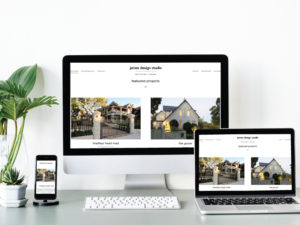Transforming store design, freshly painting the space and adding some new adornments is meant to be renovation of brick and mortar business. It comes as no surprise, why all this is done. Certainly, to create a fresh impression in customer’s mind. Likewise in virtual world, redesigning website can have the same impact on online customers. Tackling with myriads of color combinations, wireframes and databases creates puzzlement in office. Redesigning website can be a complex project as you are constantly under-pressure to create a design, better than the first. Everybody is concerned about the look and feel and turn up with their own suggestions. With so much stress and craving to roll in with best website, designers often tend to make blunders and instead of upgrading, they mess up with the design. Redesigning website is easy said than done, you need to take a step back and check where you are going wrong.
Rather than knowing how to redesign, know how not to redesign the website.
Clinging with what you already know:
If you are planning to restore the website with the design fundamentals which you know and that has been used in past then be prepared to see a similar kind of website which you must have already designed before. You don’t want to reproduce, you need to redesign and both are right opposite context. Just because the techniques worked in past, if you stick to it, the outcome would be an outdated website with monotonous look. Design trends constantly keeps on changing so hanging with old fundamentals will not be fruitful.
Following the trends without using brains:
Simply because the design style is trendy and popular, don’t dive in blindly. Before adopting any trend, you need to first identify whether it matches your demographic and your company motto, just vaguely following the trend will do no good to you. For example, flat design is in vogue and this kind of design pattern is apt for cutting-edge technological company sites. It will not make any sense if you adapt this style for traditional business websites. Design patterns may look stylish but does the audience find it functional? Generally designers concentrate on aesthetic sense and forget to focus on user experience. More than visuals, website is about usability and designers should never overlook that. Designs which are stylish but don’t work are of no use.
Trying to modify all at once:
When you try to do all the alteration at once then it is quite possible you might fail. Thus it is advisable to make small iterative changes. This way you are capable to test the changes and check its functionality and it also gives you flexibility. If you make major alterations all at once, particularly with respect to functionality, it will affect the user experience. Your site visitors may find it difficult to adopt new functionality and sadly may take an exit. Hence go for gradual approach. Slow evolution is best solution.
Lack of compatibility:
You decided to redesign your website but is it compatible with mobile phones? Is the design responsive? In a hurry to launch the revamped site, you neglect testing on other devices and as result the design flops. Presently, most of the people prefer browsing on mobile phones, as it is handy and convenient. When you redesign the website, it becomes imperative to test if the design is mobile-friendly.
Redesigning and launching a website can have the best impact on sales and lead generation and the only trick is to make the site more functional, user-friendly and striking than the previous. Remember a website is never a finished product; it always has a room for experimenting. So whenever you plan to redesign, your main intention should be to improve the site performance more than the appearance.



